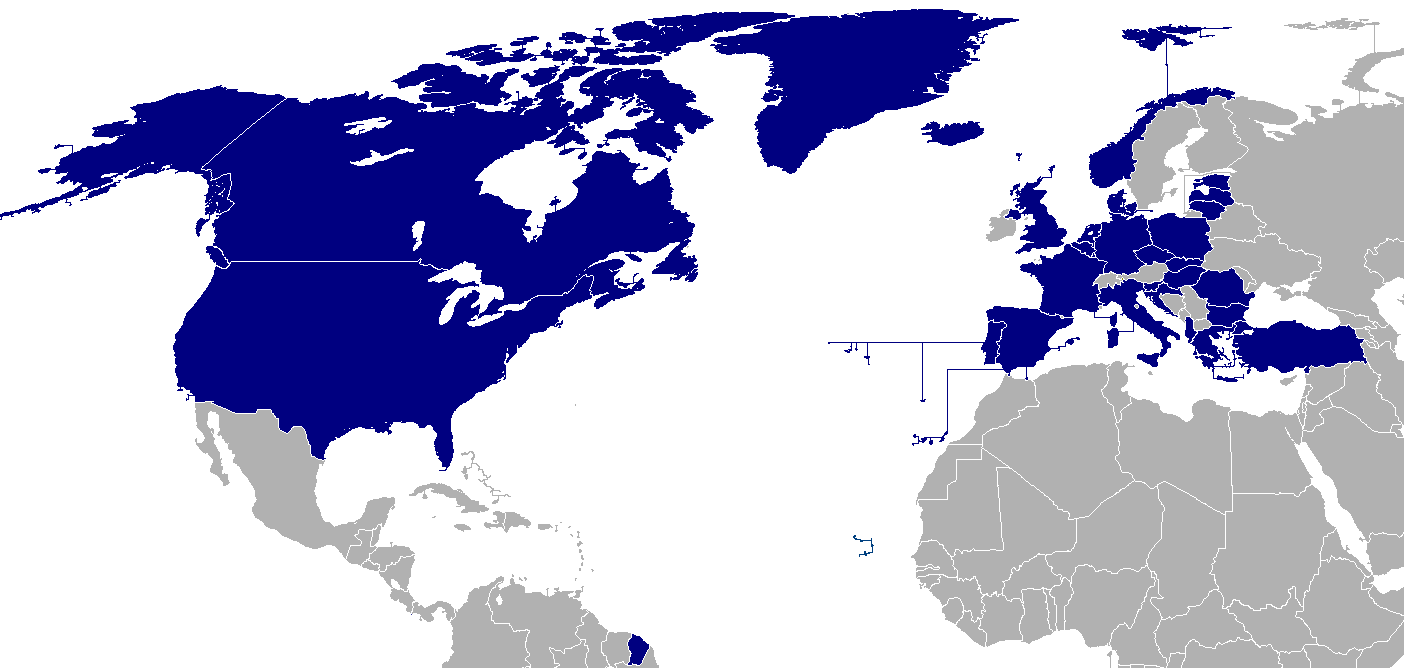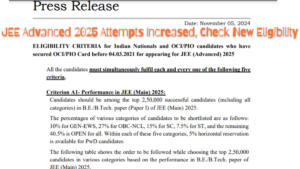Table of Contents
NATO Countries Full Form
The term ‘NATO’ stands for National Atlantic Treaty Organization. NATO is the 30 nations group (NATO Countries) from North America (2) and Europe (28) that make up the NATO security alliance, which was established in 1949 with the signing of the Washington Treaty.
NATO Countries Purpose
- The main objective of NATO Countries is to protect the independence and security of the Allies through political and military action.
- The major security tool of the transatlantic community and a manifestation of its shared democratic values continues to be NATO Countries.
- NATO serves as a realistic link that binds North American and European security together indefinitely.
- The U.S. objective of a united, free, and peaceful Europe has been advanced by NATO Countries expansion.
NATO Countries Structure
The political and military components make up NATO’s two main components. At the NATO Countries’ Headquarters, all of the member nations’ (NATO Countries) representatives assemble to reach consensus on decisions. Additionally, NATO provides a forum for communication and collaboration between NATO Countries and partner nations, enabling them to collaborate in their efforts to promote peace and stability.
The International Military Staff, the Military Committee, which is made up of the Chiefs of Defence of NATO Countries, and the military Command Structure (different from the Force Structure), which is made up of Allied Command Operations and Allied Command Transformation and is led by the Supreme Allied Commander, Europe (SACEUR) and the Supreme Allied Commander, Transformation, respectively, are the key components of NATO’s military organization (SACT).
NATO Countries Legal Authorities
- NATO is an alliance of 30 sovereign states, and membership in the organization has no bearing on any of those governments’ individual sovereignty.
- Parliaments, laws, enforcement, and the ability to punish particular citizens are all absent from NATO. A NATO commander’s power and authority are constrained as a result of this lack of sovereignty.
- Offenses including disobedience of a valid order, neglect of duty, or rudeness toward a superior officer are not punishable by NATO Countries commanders.
- NATO Countries commanders anticipate submission, but occasionally they must defer to the wishes or goals of the operators who are also bound by sovereign standards of conduct like the UCMJ.
- Conflict between General Sir Mike Jackson and General Wesley Clark over KFOR actions at Pristina Airport serves as an example.
Operational plans (OPLANs), operational orders (OPORDERs), tactical guidance, fragmental orders (FRAGOs), and other forms of directives can be given by NATO commanders to their subordinate commanders. The Law of Armed Conflict must always be upheld, along with the joint rules of engagement. Although temporarily entrusted to NATO Countries, operational resources are still under national direction.
NATO Countries
- NATO now has 30 members. Belgium, Canada, Denmark, France, Iceland, Italy, Luxembourg, the Netherlands, Norway, Portugal, the United Kingdom, and the United States were the Alliance’s initial 12 founding members in 1949.
- Denmark, Iceland, and Norway, the three Nordic nations who became founding members among the NATO Countries, decided to restrict their participation in three areas: there would be no permanent bases during peacetime, no nuclear warheads, and no Allied military activities (unless invited) allowed on their territory.
- Denmark did permit the U.S. Air Force to continue using Thule Air Base in Greenland, though.
- France adopted a “Gaullo-Mitterrandism” policy of military independence from NATO from the middle of the 1960s through the middle of the 1990s.
- In 2009, Nicolas Sarkozy negotiated France’s reinstatement in the Defense Planning Committee, which was then abolished the following year.
- Unlike the United States and the United Kingdom, France is still the only NATO Countries not a part of the Nuclear Planning Group and will not pledge its nuclear-armed submarines to the alliance.
Map of NATA Countries 2023
Following is the map of NATO Countries:

List of NATO Member Countries Year wise
The following table shows the List of NATO Countries, according to their joining year:
| Year of Joining | Member States |
| 1949 |
|
| 1952 |
|
| 1955 |
|
| 1982 |
|
| 1999 |
|
| 2004 |
|
| 2009 |
|
| 2017 |
|
| 2020 |
|
NATO Countries Defence Expenditure
- The rise in defence spending has not kept pace with the expansion of the NATO Countries membership throughout time.
- At the 2014 Wales Summit, NATO countries came together to create the Defense Investment Pledge in response to concerns about the shrinking defence expenditures, with the goal of enhancing financial equity obligations and enhancing the efficacy of financial expenditure.
- By 2024, members believed it was essential for countries to devote at least 2% of their GDP to military and 20% of their defence budget on key equipment, including funding for defence R&D.
- The European Union’s fiscal laws, the member states’ domestic public expenditure priorities, and political will all pose obstacles to the fulfilment of the Defense Investment Pledge.
Eight of the member nations met the target of a 2% GDP contribution to defence spending in 2021. 18 NATO members were able to contribute 20% of the total cost of significant equipment in 2020. The increased risk to the members’ security posed by the Russian Federation has made it easier to comply with the Wales proposals.
NATO Countries- Why is India not a member of NATO?
Through the non-aligned movement, Nehru gave the idea of non-alignment a voice, a shape, and an organisational cohesiveness.
The post-World War II division of the world into two hostile blocs, one headed by the US and the western nations and the other by the Soviet Union, provided the immediate setting for the birth of this movement.
It was Nehru’s non-aligned movement’s goal to increase the “area of peace,” not one of antagonism or conflict. As a result, neither India endorsed nor ratified the Manila Treaty, which united the countries of East Asia and the West to the Western Power Bloc, nor did it join SEATO, CENTO, NATO Countries, or the Baghdad Pact.
NATO Countries Name List 2023
NATO, the North Atlantic Treaty Organization, is a military alliance of 30 North American and European countries. Its mission is to protect the freedom and security of its member countries by political and military means. The organization was founded in 1949 and its headquarters is located in Brussels, Belgium.
The member countries of NATO are:
- Albania
- Belgium
- Bulgaria
- Canada
- Croatia
- Czech Republic
- Denmark
- Estonia
- France
- Germany
- Greece
- Hungary
- Iceland
- Italy
- Latvia
- Lithuania
- Luxembourg
- Montenegro
- Netherlands
- North Macedonia
- Norway
- Poland
- Portugal
- Romania
- Slovakia
- Slovenia
- Spain
- Turkey
- United Kingdom
- United States
NATO operates under a system of collective defense, in which an attack on one member is considered an attack on all members. The organization also provides a forum for diplomatic and military cooperation among its members. In addition, NATO is involved in various peacekeeping and humanitarian operations around the world.
NATO Countries 2023 in Hindi- नाटो देशों का नाम सूची
NATO उत्तरी अटलांटिक संधि संगठन है, यह 30 उत्तरी अमेरिकी और यूरोपीय देशों का सैन्य गठबंधन है। इस संगठन का मुख्य उद्देश्य राजनीतिक और सैन्य तरीकों से अपने सदस्य देशों की स्वतंत्रता और सुरक्षा की रक्षा करना है। संगठन की स्थापना 1949 में हुई थी और इसका मुख्यालय ब्रसेल्स, बेल्जियम में है। यह सामूहिक रक्षा की एक प्रणाली के तहत काम करता है, जिसमें एक सदस्य पर हमला सभी सदस्यों पर हमला माना जाता है। संगठन अपने सदस्यों के बीच राजनयिक और सैन्य सहयोग के लिए एक मंच भी प्रदान करता है। इसके अलावा, नाटो दुनिया भर में विभिन्न शांति स्थापना और मानवीय कार्यों में शामिल है।
नाटो, उत्तरी अटलांटिक संधि संगठन, 30 उत्तरी अमेरिकी और यूरोपीय देशों का एक सैन्य गठबंधन है। इसका मिशन राजनीतिक और सैन्य तरीकों से अपने सदस्य देशों की स्वतंत्रता और सुरक्षा की रक्षा करना है। संगठन की स्थापना 1949 में हुई थी और इसका मुख्यालय ब्रुसेल्स, बेल्जियम में स्थित है।
नाटो के सदस्य देश हैं:
अल्बानिया
बेल्जियम
बुल्गारिया
कनाडा
क्रोएशिया
चेक रिपब्लिक
डेनमार्क
एस्तोनिया
फ्रांस
जर्मनी
यूनान
हंगरी
आइसलैंड
इटली
लातविया
लिथुआनिया
लक्समबर्ग
मोंटेनेग्रो
नीदरलैंड
उत्तर मैसेडोनिया
नॉर्वे
पोलैंड
पुर्तगाल
रोमानिया
स्लोवाकिया
स्लोवेनिया
स्पेन
टर्की
यूनाइटेड किंगडम
संयुक्त राज्य अमेरिका
नाटो सामूहिक रक्षा की एक प्रणाली के तहत काम करता है, जिसमें एक सदस्य पर हमला सभी सदस्यों पर हमला माना जाता है। संगठन अपने सदस्यों के बीच राजनयिक और सैन्य सहयोग के लिए एक मंच भी प्रदान करता है। इसके अलावा, नाटो दुनिया भर में विभिन्न शांति स्थापना और मानवीय कार्यों में शामिल है।


 JEE Advanced 2025 Attempts Increased fro...
JEE Advanced 2025 Attempts Increased fro...
 PM Internship Scheme 2024: Dates, Eligib...
PM Internship Scheme 2024: Dates, Eligib...
 Tamil Nadu CM Talent Exam Result 2024 Ou...
Tamil Nadu CM Talent Exam Result 2024 Ou...





























